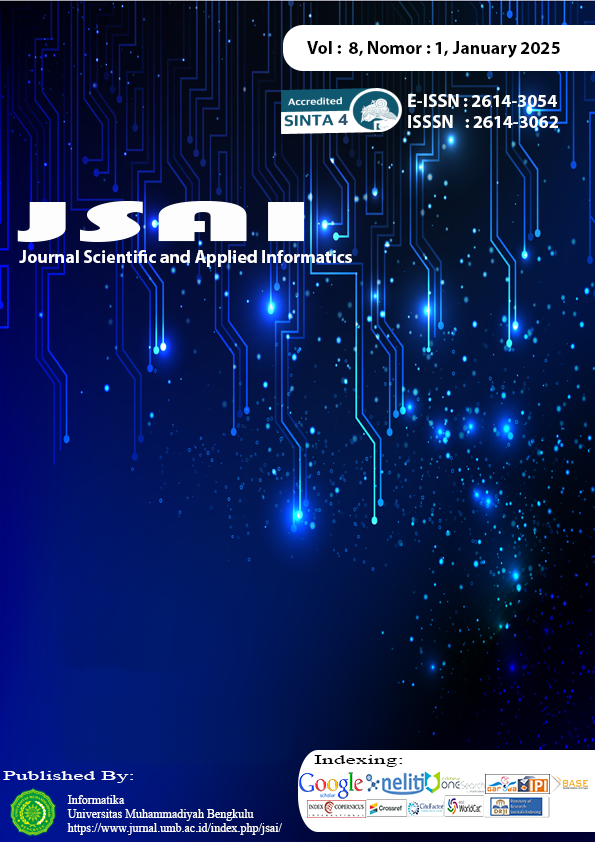Analysis Of Digital Literacy Information Systems To Enhance Students' Understanding Of The ITE Law And Religious Norms At Man Kepulauan Selayar
DOI:
https://doi.org/10.36085/jsai.v8i1.7595Abstract
The research focused on MAN Kepulauan Selayar students' level of understanding of the Electronic Information and Transaction Law (UU ITE) and how religious norms influence their attitudes to using digital technology. Selayar Islands, with its distinctive social, cultural, and spiritual characteristics, provides a relevant context for exploring digital literacy in an area with unique educational challenges. Using descriptive methods, a multiple choice test was used to measure students' understanding of the ITE Law. In contrast, a Likert scale questionnaire was used to assess the influence of religious norms on their attitudes. The data obtained were analyzed quantitatively to provide a comprehensive picture of students' digital literacy. The results showed that the average score of students' understanding of the ITE Law was 74, which was classified as a High category. Ranking analysis revealed that class XII students had the highest score of 80.77 (High category), followed by class XI with a score of 74.83 (High category), and class X with a score of 66.4 (Medium category). In addition, the average percentage of students' answers in the questionnaire shows a value of 79.42%, which is classified as Influential in reflecting the influence of religious norms on students' attitudes toward using digital technology. This finding shows that although students' level of understanding of the ITE Law is relatively good, there are differences in the level of understanding between grades. In addition, religious norms have a significant influence on students' attitudes toward the responsible use of digital technology.
Downloads
Published
Issue
Section
License
Copyright (c) 2025 Abdul Ma'arief Al Imran, Muhammad Ihsan Maro, Mursyid Ardiansyah, M Salim, Sulistiawati Rahayu Ahmad

This work is licensed under a Creative Commons Attribution-NonCommercial-NoDerivatives 4.0 International License.







